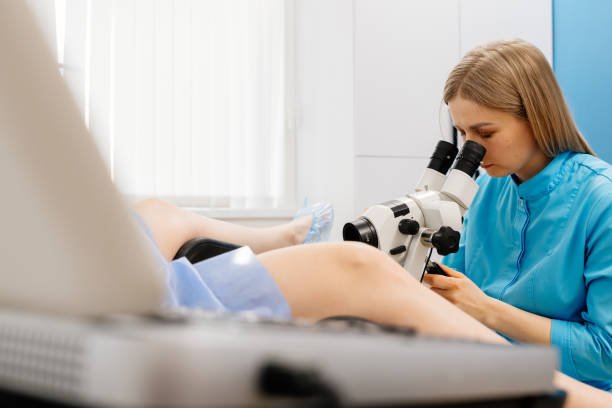Gynecomastia in Al Ain is a medical condition characterized by the enlargement of male breast tissue, often causing emotional distress and self-consciousness. Despite its common occurrence, there are many misconceptions surrounding gynecomastia, which can lead to misunderstandings and hinder individuals from seeking the right treatment. In this article, we will debunk the most common myths about gynecomastia and provide you with accurate, up-to-date information.
1. Gynecomastia is Just Excess Fat in the Chest
One of the most widespread myths about gynecomastia is that it is simply a condition of excess fat in the chest area. While it’s true that obesity can contribute to a fatty appearance in the chest, gynecomastia specifically refers to the enlargement of glandular breast tissue, not just fat. In some cases, fatty tissue may accompany gynecomastia, but the primary cause is the overgrowth of glandular tissue, which can only be effectively treated through medical interventions.
2. Gynecomastia is Only Caused by Hormonal Imbalance
Hormonal imbalance, particularly an imbalance between estrogen and testosterone, is one of the primary causes of gynecomastia. However, it is not the only cause. Many other factors, including genetics, medications (such as steroids or certain antidepressants), liver disease, kidney failure, and certain types of cancer, can also contribute to the development of gynecomastia. So, while hormonal changes during puberty or aging may trigger gynecomastia, they are not the sole cause.

3. Gynecomastia Goes Away on Its Own
Many people believe that gynecomastia will resolve itself over time, especially if it develops during puberty. While it is true that some young men may experience a reduction in breast tissue as they age, gynecomastia does not always go away on its own. In fact, if the condition persists for more than a year or causes significant discomfort, medical treatment is often necessary. Without intervention, gynecomastia can continue into adulthood, potentially leading to long-term emotional and psychological distress.
4. Gynecomastia Only Affects Overweight Men
While it is true that overweight individuals may experience a higher likelihood of developing gynecomastia due to increased fat accumulation, the condition can affect men of all body types, including those who are fit and have a healthy weight. Even men with low body fat percentages can develop gynecomastia due to hormonal imbalances or genetic factors. Therefore, gynecomastia is not exclusive to overweight men.
5. Surgery for Gynecomastia Is Dangerous and Complicated
Another myth is that surgery for gynecomastia is a dangerous, complicated, and invasive procedure. In reality, gynecomastia surgery is typically safe and effective when performed by an experienced surgeon. The procedure can be done using minimally invasive techniques, such as liposuction or glandular tissue removal, depending on the severity of the condition. The recovery time is generally short, with most men resuming their normal activities within a few days to a few weeks.
6. Gynecomastia is a Sign of Breast Cancer
It is important to differentiate between gynecomastia and breast cancer, as both conditions can cause similar symptoms, such as lumps or swelling in the chest area. However, gynecomastia is not a sign of cancer. It is a benign (non-cancerous) condition that typically involves the growth of glandular tissue. Breast cancer, on the other hand, is much rarer in men and typically presents with different symptoms, such as pain, changes in skin texture, or nipple discharge. If you’re concerned about any changes in your breast tissue, it’s always a good idea to consult a healthcare provider for an accurate diagnosis.
7. Gynecomastia Treatment Is Only for Cosmetic Purposes
Many individuals mistakenly believe that gynecomastia treatment is purely cosmetic. However, the emotional and psychological impact of the condition can be significant. Men with gynecomastia often experience embarrassment, self-consciousness, and reduced quality of life due to the appearance of their chest. Treatment options, including medication or surgery, can greatly improve both the physical appearance and emotional well-being of individuals affected by gynecomastia.
8. Gynecomastia Is a Rare Condition
Gynecomastia is more common than many people realize. It is estimated that up to 50-60% of men will experience some form of gynecomastia in their lifetime, particularly during puberty or later in life. It can affect men of all ages and backgrounds. Despite being widespread, the condition is still surrounded by stigma, which can make it difficult for individuals to talk openly about it or seek treatment.
9. Only Men with Gynecomastia Feel Self-Conscious About Their Appearance
While gynecomastia can cause emotional distress for those who experience it, it’s important to note that the condition can also affect a person’s self-esteem and mental health. Many individuals feel embarrassed or ashamed of their appearance, and in some cases, it can lead to anxiety or depression. It’s important to recognize the emotional toll that gynecomastia can take and seek the appropriate support or treatment if needed.
10. Gynecomastia Treatment Will Leave Visible Scars
A common concern for men considering surgery for gynecomastia is the potential for visible scarring. However, experienced surgeons use advanced techniques to minimize scarring and ensure that it is as inconspicuous as possible. In cases where liposuction is performed, scars are often tiny and barely noticeable. When glandular tissue removal is necessary, the surgeon will make small incisions in inconspicuous areas to minimize visible scarring.
11. Gynecomastia Only Affects Older Men
While gynecomastia is more common in older men due to hormonal changes, it can affect men at any age, including teenagers and young adults. In fact, the condition is particularly prevalent during puberty when boys experience fluctuating hormone levels. Although it may resolve on its own in some cases, others may require medical treatment to address the issue.
Conclusion
Gynecomastia is a common yet often misunderstood condition. By debunking these myths, we hope to shed light on the true nature of gynecomastia and encourage individuals affected by it to seek the appropriate treatment. Whether it’s through lifestyle changes, medication, or surgery, there are effective ways to address gynecomastia and improve both physical appearance and emotional well-being.
FAQs
1. Can gynecomastia go away without treatment? In some cases, particularly during puberty, gynecomastia may resolve itself over time. However, if the condition persists or causes discomfort, treatment may be necessary.
2. Can gynecomastia affect only one breast? Yes, gynecomastia can occur in one breast or both. In many cases, it affects both breasts equally, but unilateral gynecomastia (affecting only one side) is also possible.
3. Is gynecomastia related to weight gain? While weight gain can contribute to a fatty appearance in the chest, gynecomastia is caused by an enlargement of the glandular tissue, not just excess fat.
4. Does gynecomastia surgery leave permanent scars? Modern techniques allow for minimal scarring. Any scars that do occur are typically small and placed in discreet areas, making them difficult to notice.
5. Can exercise help reduce gynecomastia? While exercise can help reduce excess fat, it cannot address the underlying glandular tissue enlargement. Surgery or medication may be necessary for effective treatment.
6. Is gynecomastia surgery safe? Yes, gynecomastia surgery is generally safe when performed by an experienced surgeon. Like any surgery, there are risks, but complications are rare with proper care and preparation.



